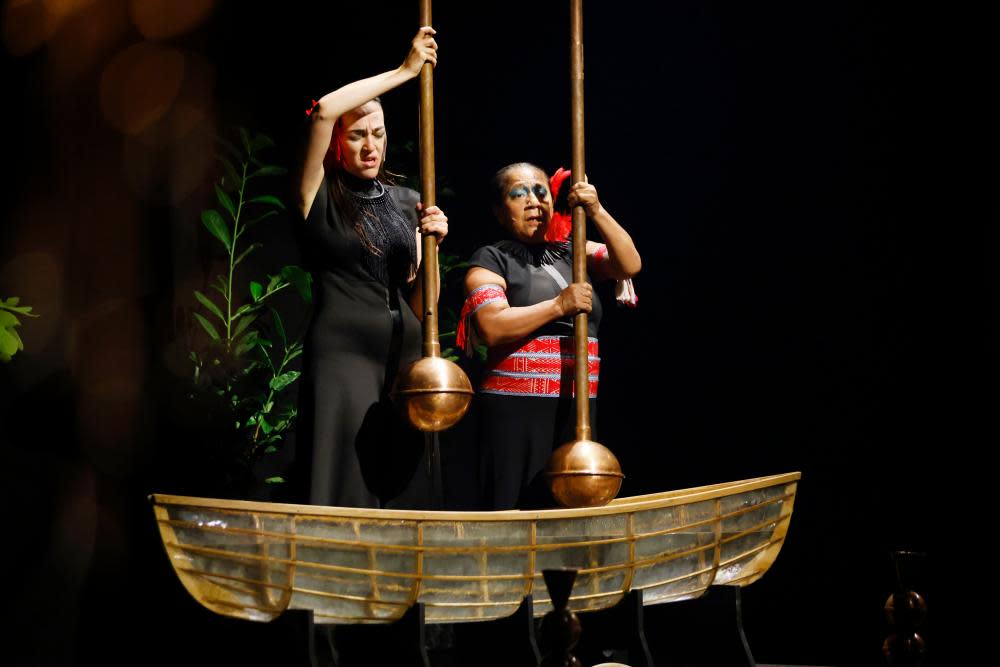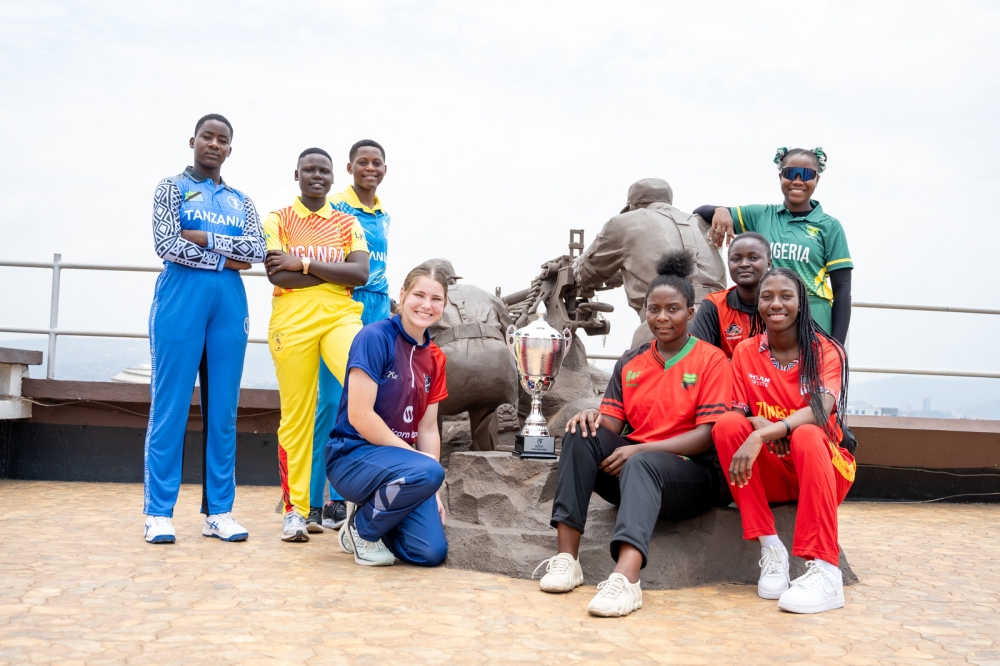Seating, in this show, shapes content. The audience sits in a circle, on stools, cushions or chairs scattered in the midst of trees, water and bird sounds. Performers weave around us.
Light falls in the same dramatic columns as the sun might beam through the gaps in a lush, remote rainforest. This avant-garde work might be a sound and light installation immersing us in the wonders of Columbia’s Amazon forest. Or an anthropological display on the rituals of its indigenous people.

It could equally be activist art about environmental destruction from copper mining, or it might be a meditation on climate, community and nature with its ritualistic pace, led primarily by song and sound. However you name it, it is utterly unique, magnetic, beautiful and sad. Émilie Monnet and Waira Nina are contemporary artists who represent the Anishinaabe of the Canadian Great Lakes and the Inga of the Colombian Amazon.
The set is a room-sized forest in miniature (set design by Julie-Christina Picher) with spot-lit trees, stone circles, copper instruments and a boat. Monnet and Nina, also its co-directors and co-writers, perform Nigamon/Tunai, which means “song” in Anishinaabemowin and Inga, primarily though sound: they chant, sing prayers, play indigenous rattles and copper instruments whose sounds are activated through immersion in clean water. But there is recorded audio footage too with interviews in multiple languages, including English, to reflect the destruction of the forest by multinationals extracting minerals.
Where the mining for copper represents a shift to green energy for these companies, there is little thought to the impact it has on the land , and the indigenous communities living on it. There are stunning light effects alongside the sound. Monnet and Nina evoke the sounds of the forest before the diggers roll in, and there is an extraordinary moment when they imitate the birdsong of the forest so vividly it is transporting, from chirrups and tweets to sliding whistles and caws.
That magic is captured again in Chantal Labonté’s lighting design, which imitates bird sounds through the movement of light. The women enact indigenous ceremony and the recorded voices speak of its spirituality – how it is so closely tied to the land and its plant-life. This show reflects that belief exquisitely, making it seem as if every last piece of the forest has a song inside it.
• At , until 18 August •.



















